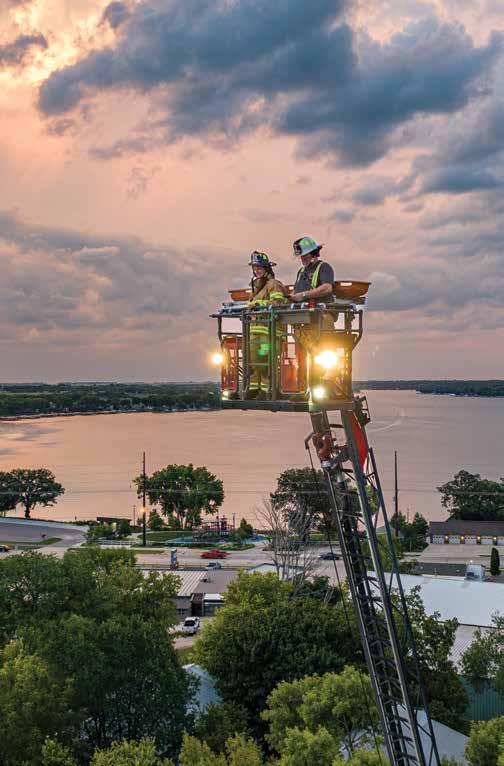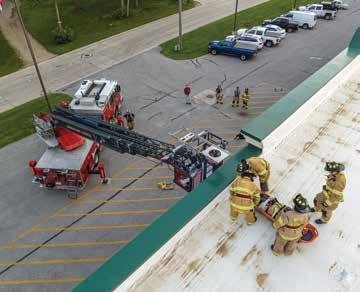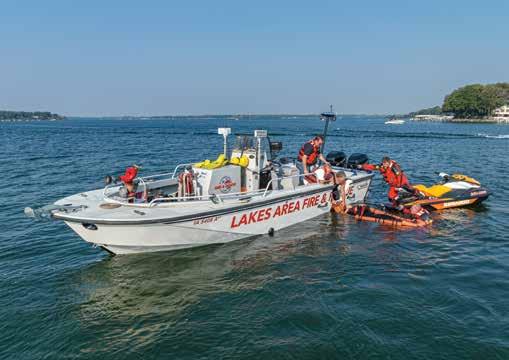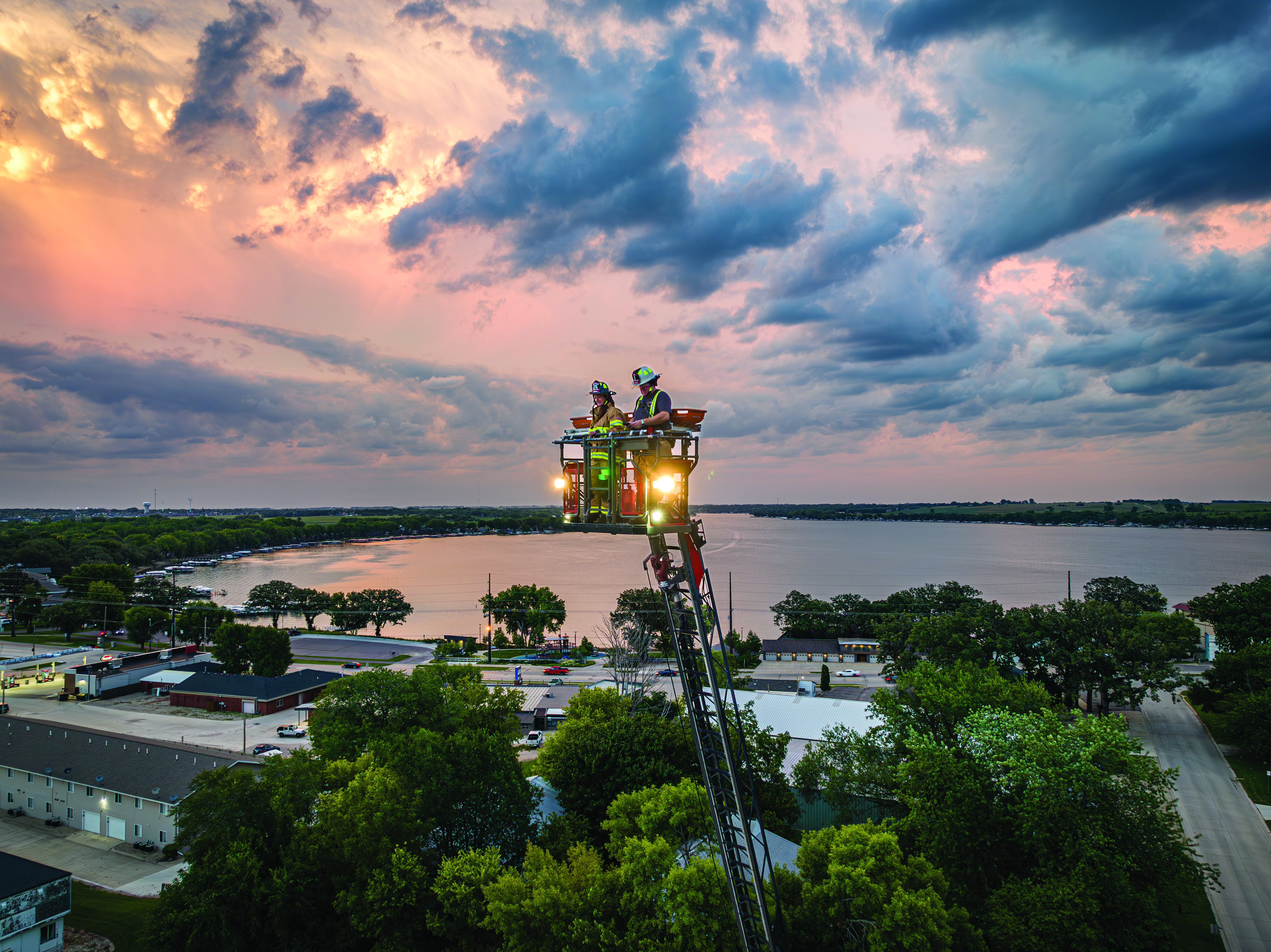
4 minute read
It Takes A Team of Heroes
SAFETY IN NUMBERS
From simple calamities like a sprained ankle to critical events like fires, vehicle accidents or potential heart attacks, there’s a team of people who run toward the trouble: They’re called Heroes.
Most of us don’t consider the planning, training, and resources that go into making an area safe, including our Iowa Great Lakes. Fortunately for both visitors and residents, we have a Team of Heroes who study and train for events to keep us safe.
Local public safety personnel are available 24/7, helping people who find themselves in peril, large or small. Each department responds to literally hundreds of calls each year. The glue holding all these departments together is the 6-person staff of the county-operated communications center, which stands ready to direct emergency calls.

Volunteer commitment isn't just limited to on-call availability; it really shows its mettle with ongoing training. Police and fire personnel represent the front line of safety for most of us, and it doesn't happen overnight.
Consider that it requires 180 hours of classroom time to reach Firefighter 1 status. That's over a month of 8-to-5 learning, and it's just the beginning.
Arnolds Park-Okoboji Fire & Rescue's Chris Yungbluth points out that even long-certified personnel have a monthly continuing education (CE) class, plus two or three nights a month for firefighters.
To be a “first responder” (now termed Emergency Medical Responders), you have additional 12 hours of training and classes; paramedics, 48 hours…and it only increases from there to higher levels of certification.
The EMT who rips your shirt open to use a defibrillator? That’s an additional 24 hours of CE every two years, just to stay up on latest techniques and technology.
Dive Team members who help pull anyone from the water, summer or winter, have even more regular training beyond their certification— two to four more hours every month.
That’s a lot of evenings and weekends sacrificed by volunteers to keep our community safe. And we’re not even talking about the many inter-agency meetings and training sessions that go on. All the departments have to learn to work together efficiently.
We’re fortunate that this area has the community support—annual Fire/Rescue and fire department fundraising activities are typically well-attended functions—but also the volunteers themselves stick with it for many years.
Arnolds Park-Okoboji Fire & Rescue has a couple of members with 30+ years’ tenure; Spirit Lake has four with that level of experience; and Milford at least two.

Our protected lakes
As any boater will tell you, our water resources are well-patrolled. We have two fulltime DNR conservation officers year-round, plus 10 to 12 seasonal Water Patrol officers assigned here—with an additional 10 called in for holiday throngs.
These are the people you want when things go sideways. Why? Again, training.
Conservation officer Daniel Dirks explains: “After completing initial basic training at the Iowa Law Enforcement Academy, newly hired officers must complete the Probationary Conservation Officer Academy and Field Training Program.” In other words, more school.
You never know what can go wrong on the water, but it won’t be good. Conservation officers learn defensive tactics, firearms, communication skills, ice and swift water rescue, and law enforcement driving. “Officers are on call 24 hours a day, seven days a week by radio and telephone,” Dirks says. “Most maintain offices in their homes and in their assigned work vehicles.”
The DNR equips officers with uniforms, firearms, and seasonal apparel including waders, snowmobile suits, and flotation devices. They never know when they might have to save a life.
So no matter the department—on our highways or our lakes—the Heroes who run toward trouble are ones you can count on.

Article written by Jonathan Reed
Photographs by Tom Gustafson






